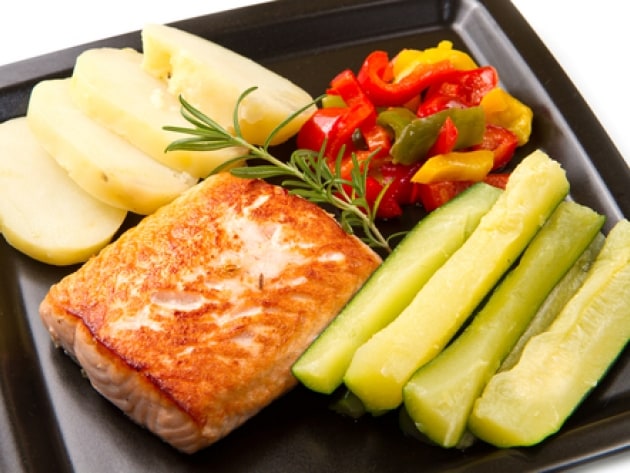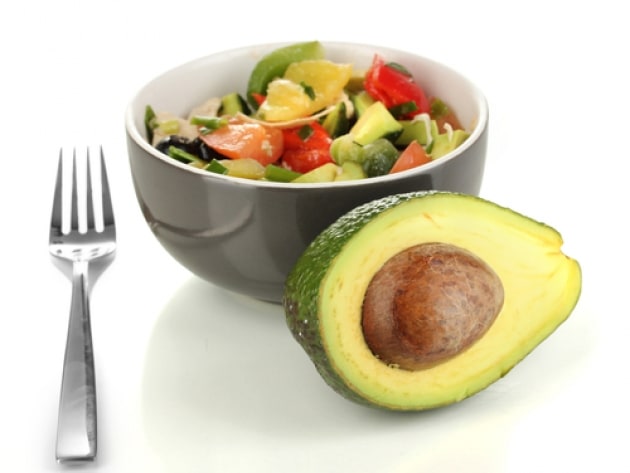
If Christmas was the time to be jolly, January is unofficially the time to diet. Being less of a fan of the word ‘diet’ when it’s used to describe a restrictive plan of eating, it’s better to think diet is more just a word to describe what you eat every day to live.
To avoid the inevitable yoyo that happens with ‘going on a diet’ and the self induced misery of berating yourself when you slip up, maybe think instead of a few tricks you can begin right away to help those extra pounds slip away.
Firstly, eat proper meals- that’s breakfast, lunch and dinner. Breakfast is the meal skipped most often by dieters, but research clearly shows eating breakfast is vital for successful weight control. Prioritize your morning meal and you’ll be improving your chances of reaching your goal weight. And while we’re at it, eat regular meals throughout the day, fueling your body every 3- 4 hours to keep your blood sugar on an even keel and keep your energy up. If you go too long without food and you get too hungry, you’re more likely to reach for the wrong things.
Outsmart your hunger hormone! That is, to help manage your hunger, make friends with the hormone ghrelin. Put simply, hunger is largely driven by ghrelin which our stomach releases when it’s been empty for a few hours. Ghrelin is one of our body’s survival tactics as it creates the sensation of hunger when it’s secreted to ensure that we eat. Once released, it’s really hard to avoid resisting food no matter how good your best intentions.
So, the trick is to alternate small, balanced meals with healthy snacks every 3 hours or so. Lack of sleep also contributes to the production of our old friend ghrelin, so if you don’t get at least 6 hours of sleep a night, you will find that not only are you hungrier the next day, but you are in a particularly poor position to resist that hunger spike, since your stress management resources are also diminished.
What does nearly everyone who experiences that mid afternoon energy slump crave? Sugar. Obviously, not part of your new year’s dietary plan! Better to get some sleep and avoid getting too hungry in the first place.

So what should you be eating? I’d suggest planning a day to shop. Before you go, make a shopping list and stick to it! And a quick guide to what should be on it –
• Good quality protein such as lean meat, fish, eggs and pulses. Protein is important as it keeps your blood sugar balanced longer, helping you avoid the cranky highs and lows
• A good variety of colourful water rich vegetables – think rainbow- kale, spinach, watercress, peppers, carrots, beets, mushrooms, tomatoes, aubergines…. the list goes on.
• Healthy complex carbohydrates such as sweet potatoes, brown rice and wholemeal pasta.
• A little fruit, not too high GI (GI is ‘Glycaemic Index’, briefly that is the measure of how much your body reacts to a food by releasing insulin, or put simply, its measure of sweetness. Better to keep the GI low if youre watching your weight) such as apples, pears, berries and citrus fruit.

How much should you be eating? At mealtimes, to help you dish out the correct portions on your plate and to help combat overeating, think in palms! The ideal plate should consist of at least 2 palms of leafy and colourful vegetables and fruit (the water rich ones), 1 palm of protein (this would be your meat, fish or vegetable based protein such as pulses, tofu and/or nuts and seeds) and maximum ONE palm of starchier carbohydrate (that’s your rice, potatoes or bread). By the way, this is one of your palms, not the palm of that larger, beefier bloke you once saw at the gym. It’s important to mention portion size as we’ve often been conditioned to pile on the starch and have less of the protein with vegetables being some kind of optional garnish. It’s the proportions on your plate you need to watch to stop the weight creeping on.
Savour your food, take the time to enjoy it and CHEW CHEW CHEW! It takes 20 minutes for your body to realize you’ve started eating, so the slower you can eat, the better, it’ll mean you’re likely to eat less.

And finally to throw some light on a few common misconceptions. Fat is important. Yes, FAT! It’s the fat in food that slows down stomach emptying, helping increase the feeling of fullness and satiety after a meal. This helps explain why low fat diets don’t work as you end up eating more to feel satisfied. Also, if it’s low fat processed food you’re buying, beware! Manufacturers nearly always increase the sugar content to compensate for the loss of flavour. Far better to have a little fat, but be mindful of portion size and include more of the good fats from protein such as oily fish, organic poultry, nuts and seeds and from vegetables sources such as coconut and avocado.
Another popular method is calorie counting. If drastically cutting calories is your chosen method as people often do when they diet, your body thinks it’s starving and it down regulates how many calories it needs at rest because it’s trying to conserve energy. Also, when you lose weight as a result of severely cutting calories, you’re likely losing lean muscle mass rather than fat. Because muscle burns more calories at rest, your body wants to rid itself of that and hold onto fat for energy. Then, as soon as you return to your old eating habits, the weight quickly piles back on.
Get the picture? You need to keep your calories up, but eat the right kind of things in the right proportions. It’s all about cultivating good habits long term.
+44 (0)7974 572 089

